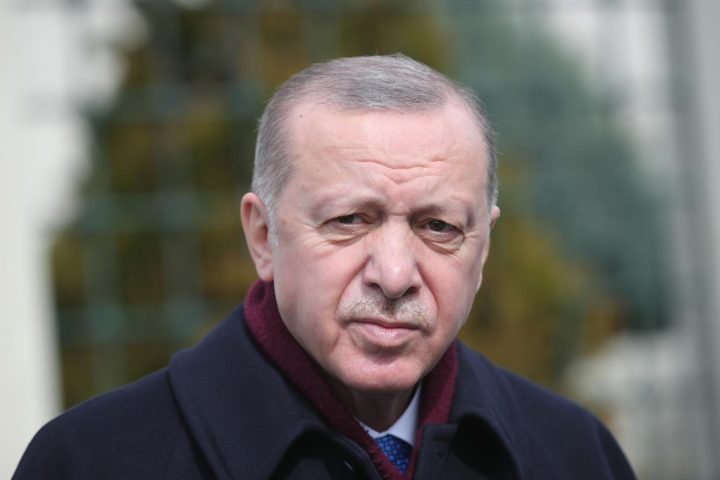Rising prices for electricity, gas and gasoline, curbed gas supplies from Russia and uncertainty about sufficient gas supplies in winter. You can see the impact of the Ukraine war on energy supplies in Germany here in graphics updated daily.
How much does energy currently cost?
Since the start of the Russian war of aggression on Ukraine, the price of gas has doubled at times, electricity has become a quarter more expensive, and the price poles at gas stations are showing record values of more than 2.20 euros per liter of gasoline. Heating oil also rose sharply in price.
The reasons for the price increases for gas and electricity are the considerable price jumps on the procurement markets, triggered by the Ukraine war and the sanctions imposed by Russia and the European Union. Last winter, the levels in German gas storage facilities were already at a historically low level. Rising gas prices are also making wholesale electricity prices more expensive, despite the elimination of the EEG surcharge.

If Russia were to permanently cut off gas supplies to Germany, there would be a threat of further price increases. Gas suppliers would have to procure replacements from more expensive suppliers in the short term. From October 1, 2022, gas suppliers will be allowed to pass on 90 percent of these higher import costs to end consumers, including for current contracts. The levy is expected to apply until the end of March 2024.
The rising gas price also makes industrial products such as fertilizers more expensive. This in turn has an impact on food and wheat prices. The sanctions policies of Russia and the EU are also causing the price of crude oil to rise, which is also affecting gasoline, diesel, and heating oil prices. To provide financial relief for motorists, the German government has introduced the so-called fuel rebate for the months of June, July and August 2022. The energy tax was temporarily reduced to the European minimum.

How much natural gas is being consumed?
Due to the disrupted gas supply, the second escalation level in the Gas Emergency Plan has been in effect since the end of June. The declaration of the alert level allows the federal government to increase the use of coal-fired power plants again in order to reduce gas consumption in power generation.
Currently, 14.5 percent of natural gas is used to generate electricity. In 2021, the figure was 16 percent. According to the Federal Ministry of Economics and Technology, it is not possible to completely dispense with natural gas in power generation, as it is primarily used to generate electricity in combined heat and power plants, which are important for heat generation.
Gas consumption
Monthly natural gas consumption in terawatt hours and the average monthly temperature in degrees Celsius in Germany

Overall, gas consumption in Germany has fallen significantly. According to Economics Minister Robert Habeck (Bündnis 90/Die Grünen), gas consumption in Germany would have to be reduced by 15 to 20 percent compared to last year in order to get through the winter well. This is also in line with the savings target agreed by the EU member states at the end of July in a gas emergency plan for this winter. According to the plan, member states are to reduce their gas consumption by 15 percent between Aug. 1, 2022, and March 31, 2023. The comparative figure is each country’s average gas consumption between Aug. 1 and March 31 over the past five years. Compliance with the EU countries’ savings target is voluntary.
How dependent is Germany on Russian gas?
Before the Russian attack on Ukraine, half of Germany’s gas and coal imports and even a third of its oil came from Russia. Since the beginning of the war, the German government has been trying to find alternatives to Russian energy imports. The planned commissioning of the Nord Stream 2 gas pipeline has been halted. Russian gas company Gazprom, from which gas imports come via Nord Stream 1, drastically reduced delivery volumes in June. After a 10-day maintenance period in July 2022, during which no gas flowed through the Baltic Sea pipeline, the company again reduced flow rates. Currently, gas transport is only 20 percent of maximum capacity.
Gas from Russia
Gas pipeline delivery volumes from Russia in GWh

In order to be independent of Russian gas this winter, the gas storage facilities are to be filled by the fall. Stricter requirements came into force at the end of July. On October 1, the storage facilities must be 85 percent full instead of the previous 80 percent, and on November 1 they must be 95 percent full instead of 90 percent. Most recently, German operators were still assuming that 90 percent could be reached by November 1. However, this is only possible if gas deliveries via Nord Stream 1 remain at 20 percent and are not completely shut down.

In addition, the German government is planning to build several LNG terminals for gas ships. LNG is to be supplied via two floating terminals in Wilhelmshaven and Brunsbüttel as early as the turn of the year. With the second stage of the Gas Emergency Plan and a corresponding ordinance, the formal requirements have now also been met for coal-fired power plants that are about to be shut down or are in reserve to be used to generate electricity from October 1. This is already possible for hard coal-fired power plants.
Level of gas storage facilities in European countries

At the end of June, the energy ministers of the EU countries agreed on a target for European gas storage facilities. These are to be 80 percent full by the beginning of November. Some countries have already reached this target.
Independence through renewable energies?
The energy crisis shows how important it is to expand renewable energies. In Germany, more than half of the electricity generated often comes from renewable energy sources such as wind and solar power. During dark periods, i.e. when it is dark and the wind is down at the same time, more electricity is fed into the grid from gas, coal and nuclear power plants.

However, electricity is not the only energy required. Industry uses coal and gas, and transportation mostly uses petroleum. Homes are often heated with gas or oil heaters. The German government wants to replace these with climate-friendly heat pumps.
According to the law, CO2 emissions in Germany are to be reduced by 65 percent by 2030 compared with 1990 levels. Climate neutrality is to be achieved by 2045. With the so-called Easter Package, the German government has decided that the share of renewable energies in gross electricity consumption should increase to at least 80 percent by 2030. This would make Germany less dependent on fossil energy imports.
Data sources and methodology
Prices: The data on gas and electricity prices come from the comparison portal Verivox, which operates a database of current gas and electricity tariffs from various providers. For gas, the portal calculates the total annual costs for an average household consuming 20,000 kilowatt hours as an example. With river with the need of a three to four person household is computed, which corresponds on the average to 4,000 kilowatt-hours. The calculations are based on the cost of new contracts. For easier understanding, we have converted the prices to cents per kilowatt hour.
The fuel price data is passed on by the German Federal Cartel Office to providers of consumer information services. One of these is the tankerkönig.de portal, through whose public interface we obtain the data. The prices are based on digital reports from all gas stations in Germany. We use the data to calculate the daily average of all reported prices for diesel, Super E10 and Super E5.
Russian gas: The Entso-G association collects and publishes data from European network operators on the volumes of gas flowing through their pipes. We query these daily via an interface.
Gas storage facilities: The filling levels of gas storage facilities in Germany and other European countries are continuously reported by the operating companies to the AGSI platform of the GIE association. We query this data daily via an interface. The latest data is always available for the day before yesterday. In part, these are estimated values. This information fluctuates depending on when the data is queried. Ireland is listed in the database, but no data is available.
Gas Consumption: Natural gas consumption in Germany is published each month by the Federal Network Agency. The monthly average temperature is published by the German Weather Service.
Electricity mix: We query the data on the electricity market automatically via an interface from the Federal Network Agency. The data is provided every quarter of an hour, and we query it daily.
Source of the news: https://www.faz.net/






